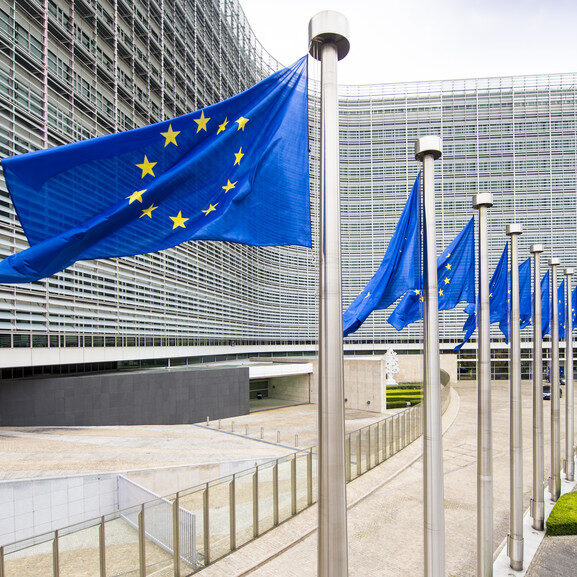The European Commission has said the EU’s existing crypto framework is sufficient to address the main risks posed by stablecoins, signalling it sees no need for major legislative change despite calls from the European Central Bank (ECB) for tighter safeguards.
European Commission said the Markets in Crypto-Assets regulation (MiCA) “provides a robust and proportionate framework for addressing risks stemming from stablecoins,” adding that the executive is preparing guidance “as soon as possible” to clarify how the rules apply in practice. The statement follows an intensifying debate in Brussels over the permissibility of so-called “multi-issuance” models used by global stablecoin firms.
At issue is whether a multinational issuer can treat tokens created inside the EU as fully interchangeable with those minted outside the bloc. The ECB and the European Systemic Risk Board (ESRB), chaired by ECB President Christine Lagarde, have warned that such structures embed financial-stability risks. Supervisors fear that holders of tokens created by a non-EU entity could attempt to redeem them against reserves maintained by an EU entity, concentrating pressure on euro-area backing assets and potentially triggering runs.
Industry groups counter that risk can be contained through conservative reserve management, unified redemption policies and transparency. In a letter sent on Tuesday to European Commissioner Maria Luís Albuquerque, six crypto industry associations whose members include Circle — a leading dollar-pegged stablecoin issuer — urged the Commission to confirm that multi-issuance is permissible in principle under MiCA and to set out operational guidance. The associations argue that a consistent approach would avoid market fragmentation while keeping supervision within the EU’s established prudential perimeter.
Stablecoins, which are designed to track real-world currencies, have grown rapidly and now underpin large parts of digital-asset trading and payments. According to analysts at JPMorgan this week, around 99% of current stablecoin supply is linked to the US dollar, a concentration that, in their view, reinforces international demand for dollar assets. The United States has moved to encourage development of the sector through federal legislation this year, adding competitive pressure on other jurisdictions to provide regulatory certainty.
MiCA, the EU’s flagship crypto rulebook, brings stablecoins — defined in EU law as asset-referenced tokens and e-money tokens — under a dedicated supervisory regime that includes licensing, governance, reserve, redemption and disclosure obligations. The regime is intended to align crypto-asset issuance and service provision more closely with standards applied to traditional financial institutions, with national competent authorities and the European Banking Authority playing central roles for the largest issuers. The Commission’s stance suggests it believes these pillars already capture the core prudential and conduct risks highlighted by the ECB.
For the central bank and the ESRB, however, the cross-border mechanics of multi-issuance remain a weak point. Their concern is that contractual equivalence between EU and non-EU tokens could create implicit guarantees that are hard to honour under stress, especially if redemption queues were to form across different legal entities in several jurisdictions. In that scenario, the burden could fall disproportionately on reserves maintained within the euro area, with knock-on effects for money markets and short-dated sovereign or bank paper used as backing assets.
Issuers dispute that outcome. They say that ring-fencing reserves by legal entity, maintaining conservative liquidity buffers, and applying uniform, public redemption policies can prevent arbitrage of redemption venues. They also point to MiCA’s requirements on safeguarding, audits and public reporting as tools that, if applied consistently, will mitigate contagion and operational risk irrespective of corporate structure.


